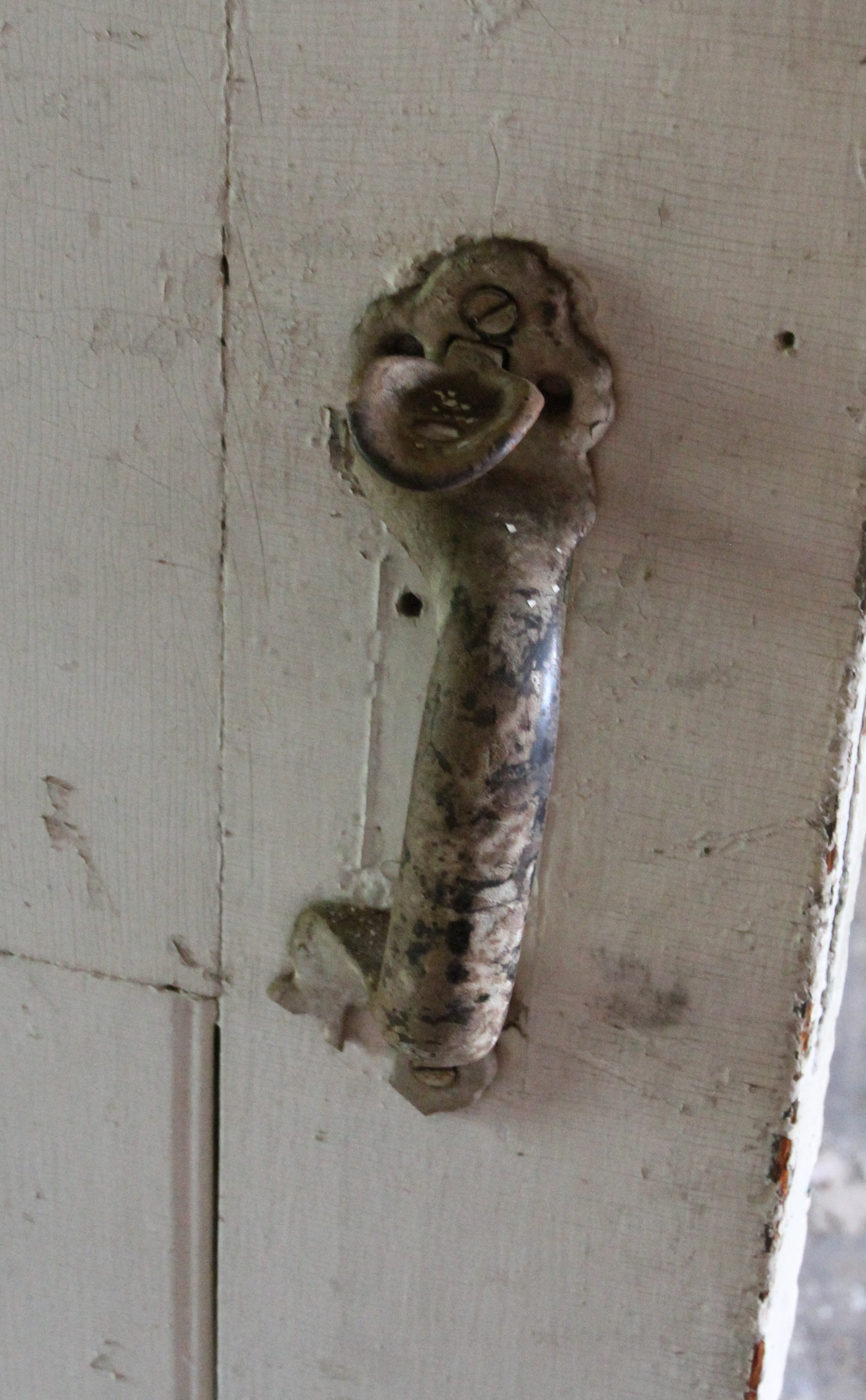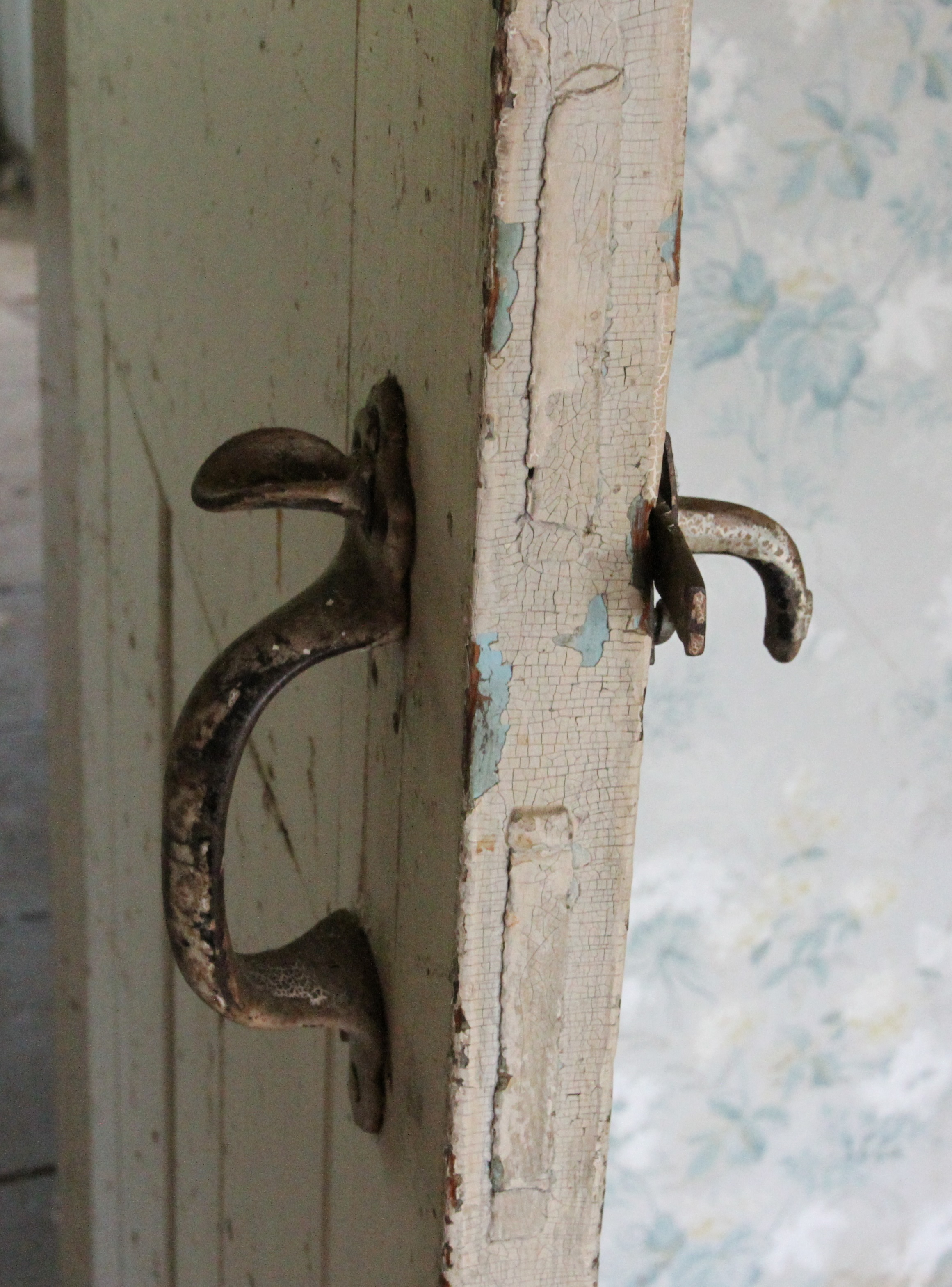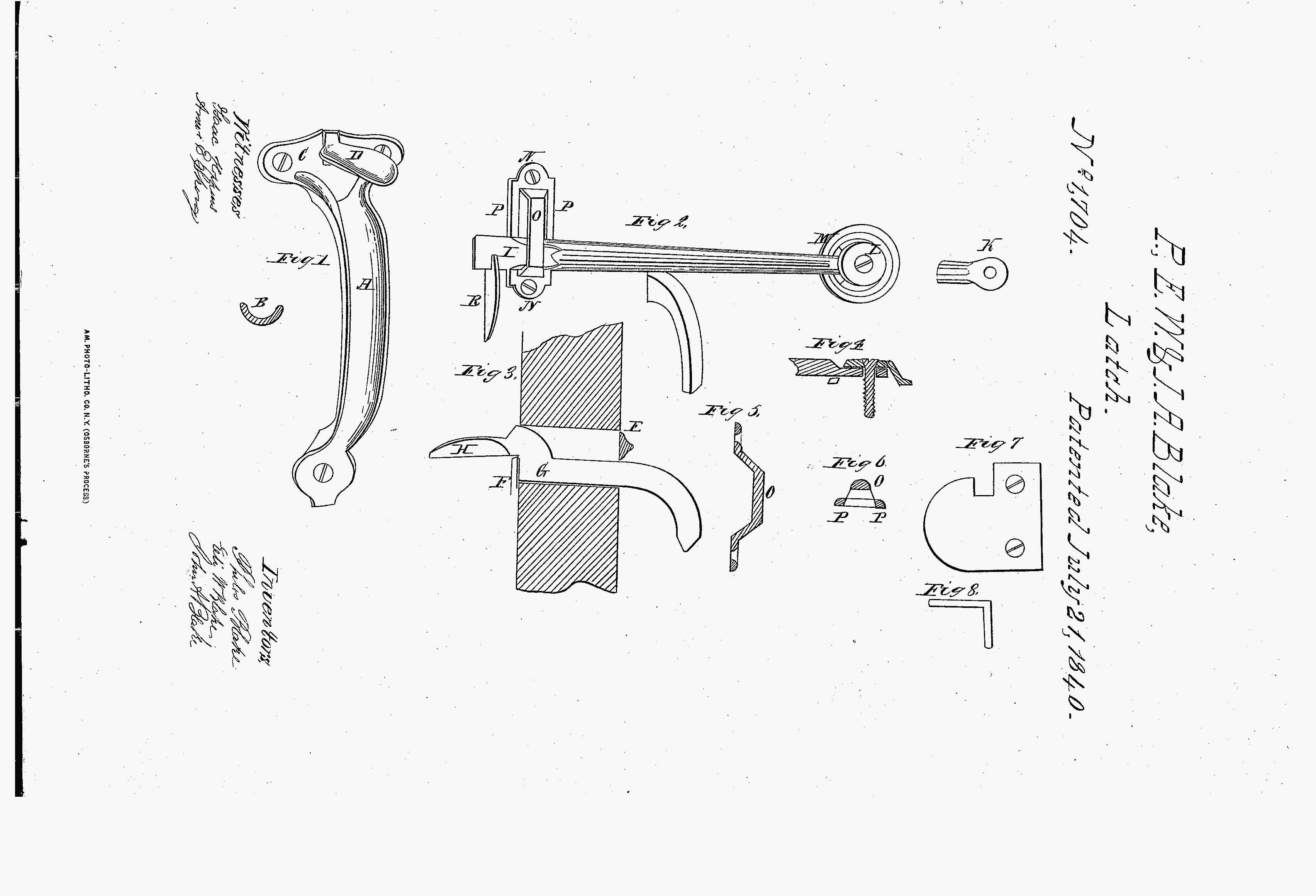The Blake Latch
Seth Hinshaw, 1/22/2019
The most common door latch of the years 1845 to 1900 was the Blake latch. This innovation, a cast iron version of the Suffolk latch, supplanted the Norfolk latch. It has an interesting history that appears to have been mostly forgotten. Some information on various websites about the Blake latch include accretions and mistakenly attribute the latch to Thomas Blake.
Below is a typical Blake latch in a house built in 1806. This particular latch replaced a Norfolk latch, and the holes from the screws of the Norfolk latch survive.The handle is also angled, which meant that it was intended for use on a store door rather than being used in a residence.


The story of the invention of the Blake latch was not generally available for four decades after its invention. An article in Scientific American in 1880 identified the Blake latch as far preferable to door latches in use in England at the time. Upon reading that article, a newspaper reporter found one of the Blake brothers (either Philos Blake or Eli W. Blake) to discuss the Blake latch and expand upon the article, and the revised article with the interview appeared in multiple newspapers nationally. The newspaper used for this article was the Weekly Marysville Tribune, published in Marysville, Ohio, 8/25/1880.
The Blake brothers' story began in the 1820s when Eli Whitney was building a gun factory. He called two nephews to assist him, Philos Blake and his brother Eli W. Blake. The two young men (born in the 1790s) lived in Whitneyville and operated the Whitney gun works from the death of Eli Whitney in 1825 until 1836 (New Haven Morning Journal-Courier, 8/19/1886).
After the management of the gun factory passed out of their hands, the Blake brothers began to produce tooth brushes but were dissatisfied with sales. One of the Blake brothers was interviewed in 1880 for the article mentioned above, and although the name of this specific brother was not identified, it was likely Philos Blake. He told the reporter "I found it was necessary to invent something. Going to the City of New Haven, I went into a hardware store and asked the salesman to show me the worst made article of general use. He at once handed me a Norfolk latch. I bought it, took it home, and in a short time made the present latch."
The patent sketch for the Blake latch appears below. Originally, the thumb piece rested in a slot at the top of the handle. Soon thereafter, a cusp was added to the top of the latch for added strength, resulting in the common Blake latch shown in the images above. The patent was listed in the names of Philos Blake, Eli W. Blake, and a third brother John A. Blake (Patent #1,704 (1840).

The Blake latch was an immediate success. The three brothers built a factory and named their business Blake Brothers. The Blake who was later interviewed reported they sold "thirty thousand dozen" in their first year in production (Weekly Marysville Tribune, 8/25/1880).
Blake Brothers produced other items in the mid-nineteenth century. They produced door locks and hinges and perfected the caster for furniture. Eli W. Blake invented a stone crusher that was marketed around the nation to prepare stone for roads (Hartford Courant, 8/19/1886). Philos Blake served as a local Whig politician and later patented an oyster knife that was popular in the 1850s.
The Blake latch was produced around the nation, particularly after the patent protection expired. Blake latches are rarely found on the more public areas of houses, such as the front door and the doors off the center hall, mostly because the porcelain knob and the cast iron rim lock were introduced about the same time and became the first choice for doors in the public spaces of houses. Blake latches are primarily found on second floor bedroom doors and private spaces such as attics and basements, in addition to outbuildings. Blake latches in barns are usually oversized compared to those for houses and continued to be used in new construction into the early twentieth century, long after they had been phased out of residential construction.
Earlier blog posts
8/28/2020 Chicago Millwork Supply Company catalog of 1931
10/6/2019 History of Hinkle & Company (1833-1870)
9/17/2019 History of Mulliner Box & Planing Company
6/3/2019 J.R. Quigley Plant, Gloucester City, New Jersey
4/23/2019 Cleveland Cottage Door
4/13/2019 Trenton historic door #2
4/10/2019 Trenton Doors #1
3/6/2019 Pressed Wood Door Knobs
2/23/2019 Gettysburg Doorscape, Part 4
2/18/2019 Gettysburg Doorscape, Part 3
2/12/2019 Gettysburg Doorscape, Part 2
2/9/2019 An Introduction to the Gettysburg Doorscape
1/22/2019 The Blake Latch
1/19/2019 Rare Four-Panel Door of 1890s
1/5/2019 Cast Iron Rim Locks
12/28/2018 Inaugural Blog Post